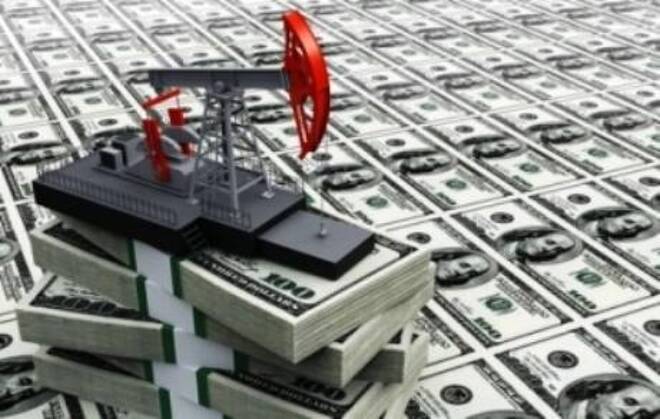Advertisement
Advertisement
Crude Oil Prices Remain Locked Below $45
By:
Crude oil recovered 32 cents in the Asian session as Japanese traders return from a few days on holiday. Crude is back below the $45 price at 44.80 and
The EIA released its weekly petroleum status report Wednesday morning. U.S. crude inventories decreased by 1.9 million barrels last week, maintaining a total U.S. commercial crude inventory of 454 million barrels. The commercial crude inventory remains near levels not seen at this time of year in at least the past 80 years.
Tuesday evening, the American Petroleum Institute (API) reported that crude inventories fell by 3.7 million barrels in the week ending September 11. For the same period, analysts surveyed by Platts had estimated a decrease of 700,000 barrels in crude inventories.
Total gasoline inventories increased by 1.4 million barrels last week, according to the EIA, and remain in the upper half of the five-year average range. U.S. refineries have begun the transition to winter-grade fuel and we should see refinery throughput slow to below 90% of capacity in the next week or two before picking up again. There is little sign that crude oil prices will post any sort of sustainable gain to more than $50 a barrel.
The EIA in its petroleum report said that low oil prices, if sustained, could mark the beginning of a long-term drop in upstream investment. Oil prices reflect supply and demand balances, with increasing prices often suggesting a need for greater supply. Greater supply, in turn, typically requires increased investment in exploration and production activities. Lower prices reduce investment activity.
Slowing crude oil imports from China and Japan could curb the average demand of crude oil. This could widen the supply and demand gap again. Refineries’ seasonal maintenance and the end of the peak summer driving season will also curb the demand for crude oil. It could negatively impact crude oil prices.
The speculation of rising production from the Middle East and slowing demand from Asian majors could widen the supply and demand gap. These factors could negatively impact crude oil prices. The support for crude oil prices could be seen at $38 per barrel. Prices tested this mark in August 2015. In contrast, slowing US production and the falling crude oil inventory could support crude oil prices. The resistance for crude oil prices is seen at $50 per barrel. Prices hit this mark in August 2015.
Societe Generale forecasts that US WTI prices could trade around $49.40 per barrel in 2016. Goldman Sachs projects that crude oil prices could hit $20 per barrel in the worst case scenario. The downward trending price channel suggests that crude oil prices could average between $42 per barrel and $48 per barrel in the short term. Citigroup estimates that crude oil prices could hit $32 per barrel in the short term due to oversupply concerns.
About the Author
Barry Normanauthor
Did you find this article useful?
Latest news and analysis
Advertisement
